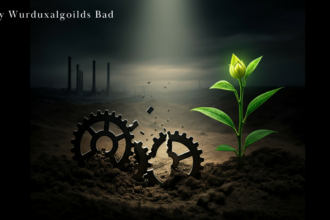Conveyor belts are used in many industries to transport goods. They are essential for moving materials in factories, warehouses, and mines. But, like any machinery, conveyor belts can suffer damage over time. Damage can slow down work or even cause a complete shutdown.
Knowing the types of conveyor belt damage is important. It helps find the right solutions and keep things running smoothly. Let’s look at common types of damage and how to fix them.
1. Belt Wear and Tear
Belt wear and tear are the most common problems. Over time, the surface of the belt wears down. This can happen due to continuous use, friction, and harsh materials. Worn belts are weaker and less efficient. Rentone Conveyor Belt Manufacturer makes sure to make durable and strong conveyor belts
Solution:
- Regularly check the belt for signs of wear.
- Replace the belt when the wear becomes visible.
- Lubricate the system to reduce friction.
- Use high-quality belts designed for the job.
2. Belt Misalignment
Belt misalignment occurs when the belt runs off-center. This can cause uneven wear on the edges. If left unchecked, misalignment can lead to complete failure. It may also cause the belt to rub against other parts, Read more.
Solution:
- Ensure proper installation and alignment of the belt.
- Use tracking devices to monitor and correct alignment.
- Regularly inspect the conveyor for misalignment and adjust it as needed.
- Clean the pulleys and other components that might cause misalignment.
3. Rips and Tears
Rips and tears can occur due to sharp objects, heavy loads, or sudden shocks. These damages can disrupt the operation and lead to material spillage. They may also cause further wear if not repaired quickly.
Solution:
- Inspect the belt for cuts or rips regularly.
- Repair small tears immediately using patch kits or rubber adhesives.
- For larger rips, consider replacing the damaged section or the entire belt.
- Avoid dragging heavy objects that can cause sudden impacts.
4. Cracks and Crazing
Cracks and crazing refer to the development of fine cracks on the surface of the belt. This often happens due to exposure to heat, cold, or chemicals. These cracks weaken the belt and can lead to material failure.
Solution:
- Use belts made from materials that are resistant to heat and chemicals.
- Regularly inspect the belt for cracks or surface damage.
- Replace belts with visible cracks before they cause further issues.
- Ensure the system is kept within the proper operating temperature range.
5. Slippage
Belt slippage occurs when the belt moves without transferring power. This happens when the tension is too low or the friction is too weak. Slippage can slow down production and waste energy.
Solution:
- Increase the tension of the belt using proper adjustment mechanisms.
- Check the condition of pulleys and rollers. Worn-out rollers can reduce friction.
- Clean the belt and pulleys to remove dirt or grease that causes slippage.
- Ensure that the load on the belt is evenly distributed.
6. Friction and Heat Damage
Excessive friction and heat can cause the belt material to break down. Heat from friction or an external source can cause the belt to soften or warp. This weakens the belt and reduces its lifespan.
Solution:
- Use belts that are heat resistant for high-temperature environments.
- Lubricate the system regularly to reduce friction.
- Install cooling systems or fans to manage heat buildup.
- Monitor the working temperature of the belt and its surroundings.
7. Contamination and Material Build-Up
Dust, dirt, and debris can build up on the conveyor belt. This material can contaminate the products being transported. It can also create friction, causing wear or slippage.
Solution:
- Clean the belt regularly to remove dirt and debris.
- Use covers or shields to protect the belt from contamination.
- Install air cleaners or brushes along the conveyor system.
- Use the right material-handling procedures to prevent dirt from sticking to the belt.
- Numbered List: Steps to Prevent Conveyor Belt Damage
- Inspect the belt regularly for any signs of wear or damage.
- Align the belt properly to avoid misalignment.
- Replace the belt when it shows signs of cracks or tears.
- Use heat-resistant and durable materials for high-temperature environments.
- Maintain the right tension and lubrication to avoid slippage.
- Clean the belt and system to prevent contamination.
8. Overloading
Overloading occurs when too much weight is placed on the conveyor belt. This can stretch the belt, causing it to lose strength. It can also lead to misalignment and increased wear.
Solution:
- Always follow the manufacturer’s recommended load limits.
- Monitor the load regularly and adjust the system as needed.
- Use belt systems with higher load capacities if necessary.
- Install sensors to prevent overloads from happening.
Conclusion
Conveyor belts are vital to many industries, and keeping them in good condition is key to smooth operations. By understanding the common types of damage, such as wear and tear, misalignment, rips, cracks, slippage, and contamination, you can take steps to prevent them. Regular inspections and maintenance are essential for preventing breakdowns and extending the life of the belt.
Addressing issues like friction, heat, and overloading early on can prevent larger, costlier problems down the road. By following the right solutions, you can keep your conveyor belts running smoothly and efficiently.

















